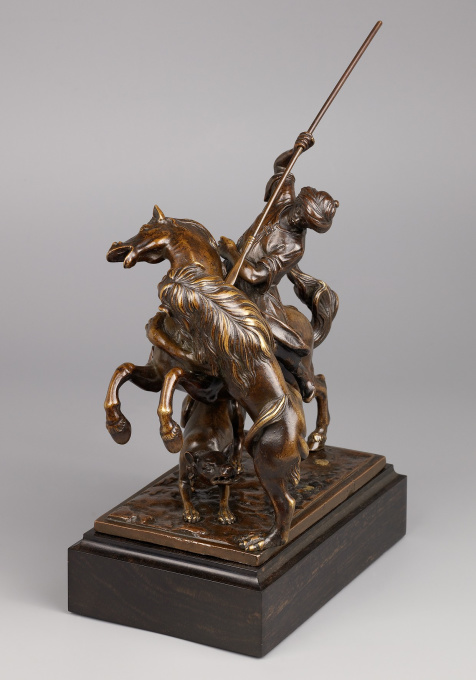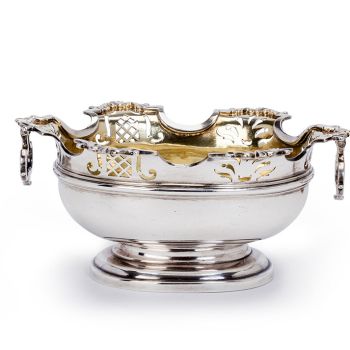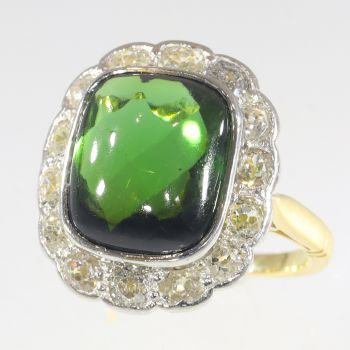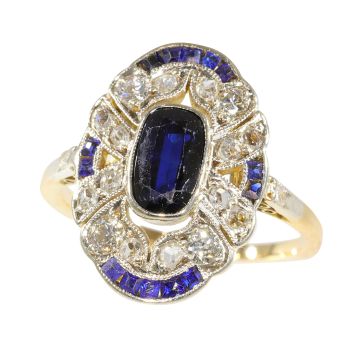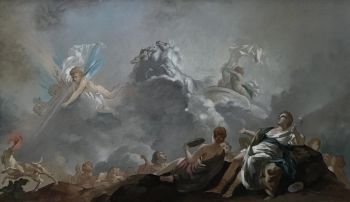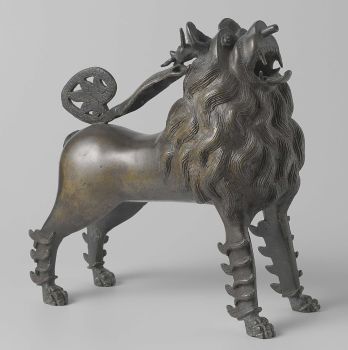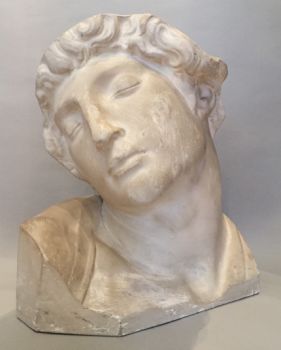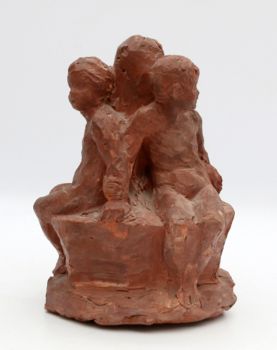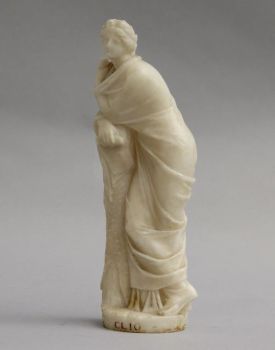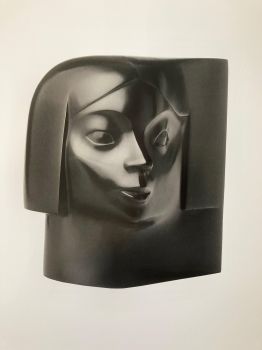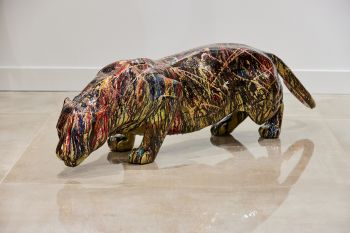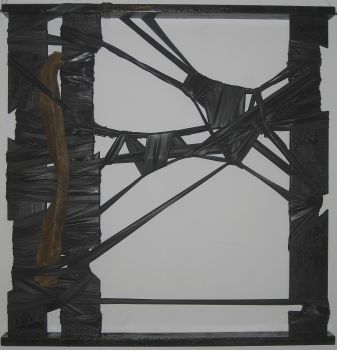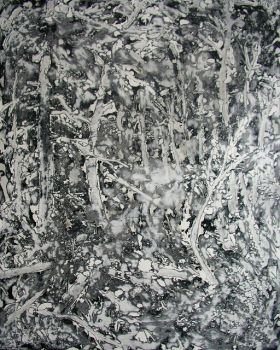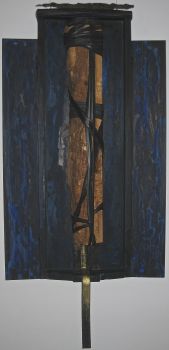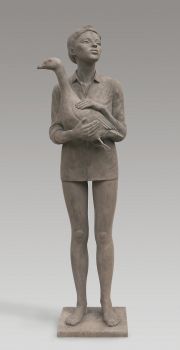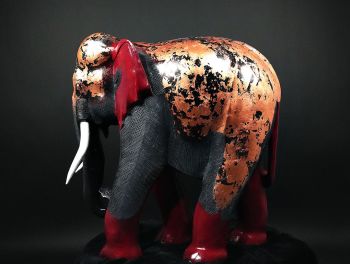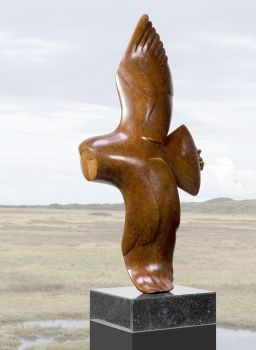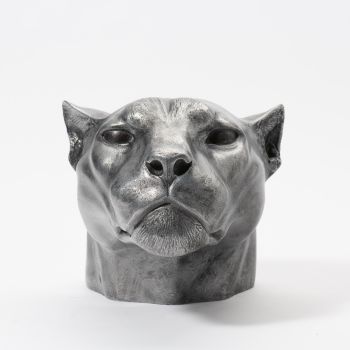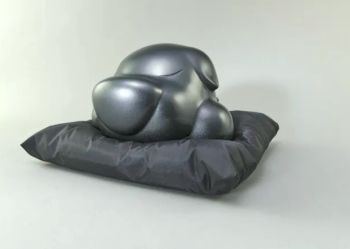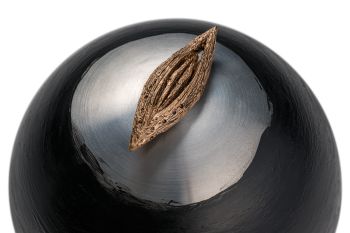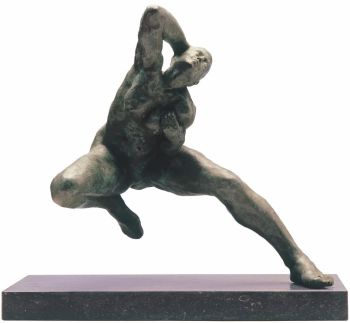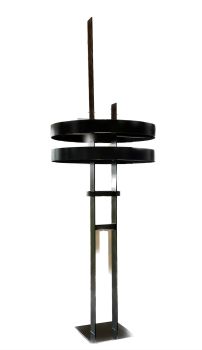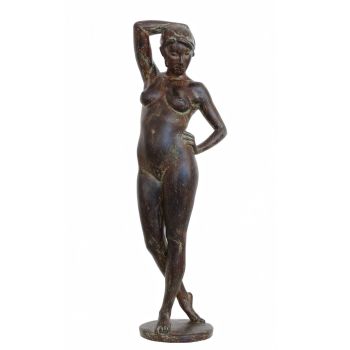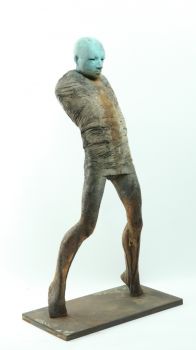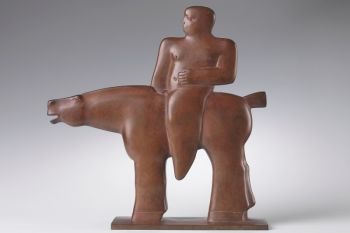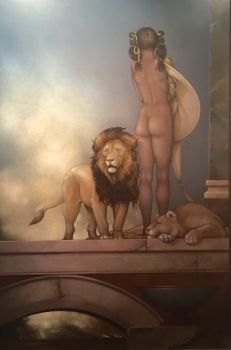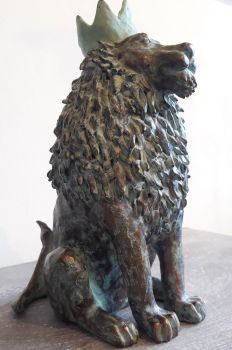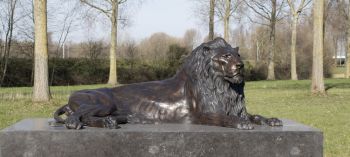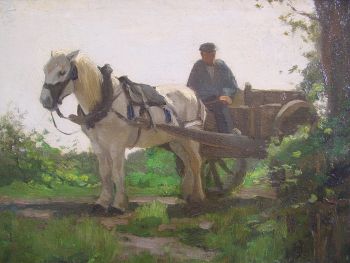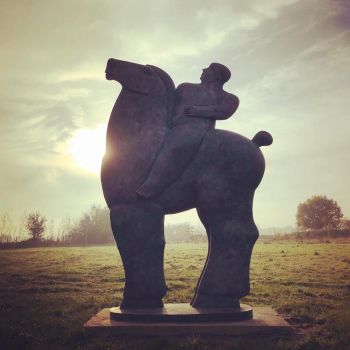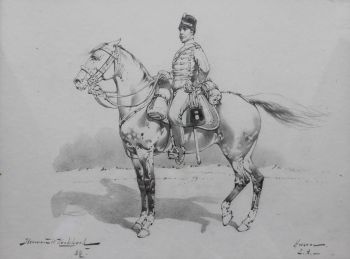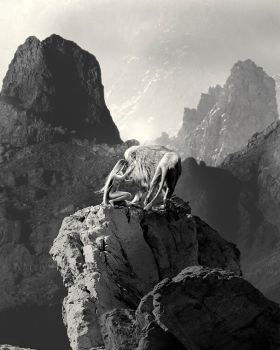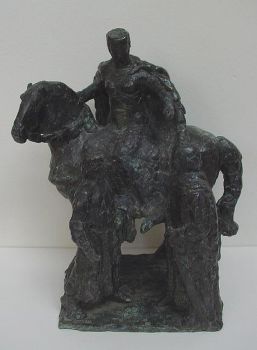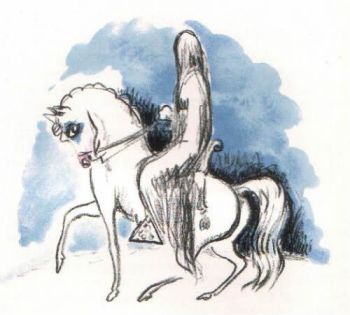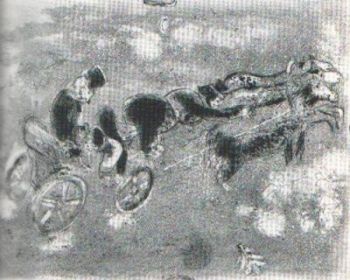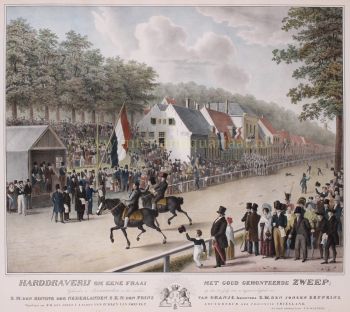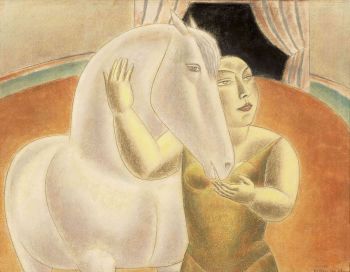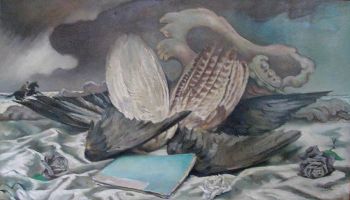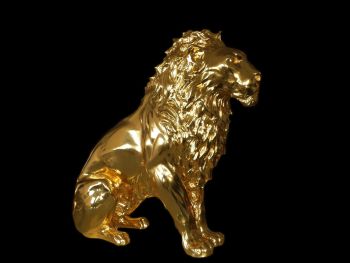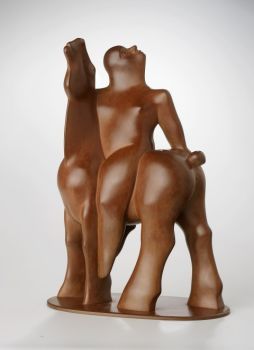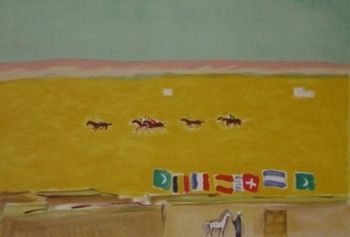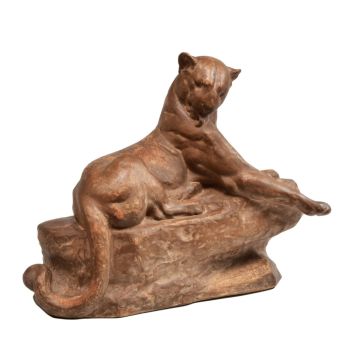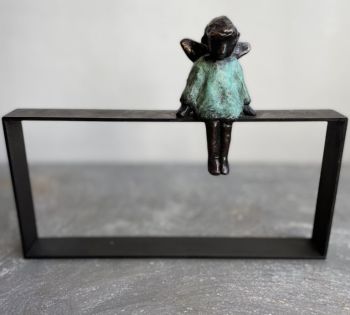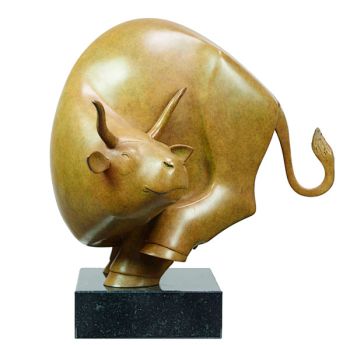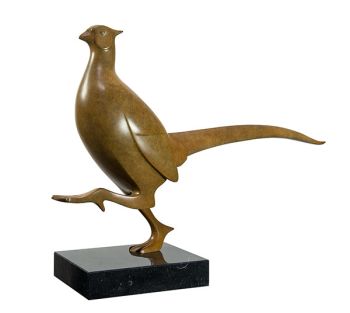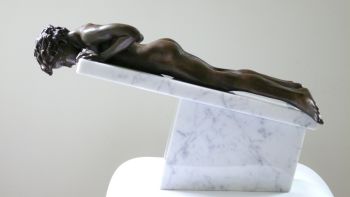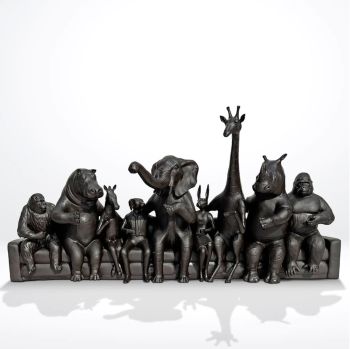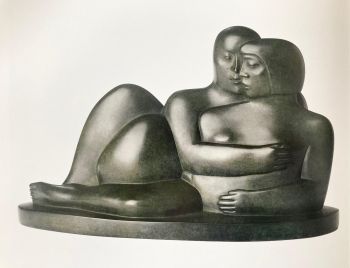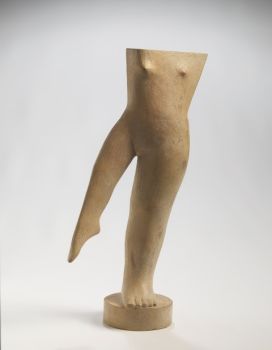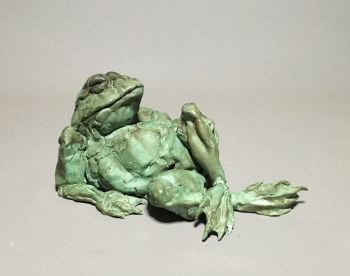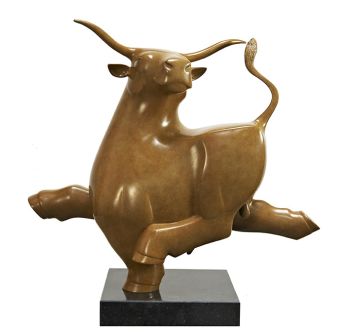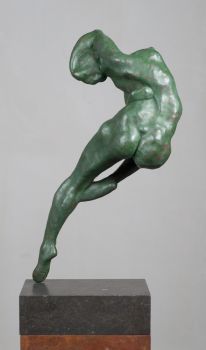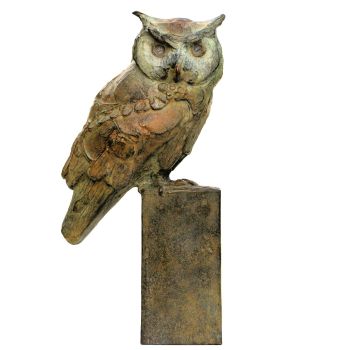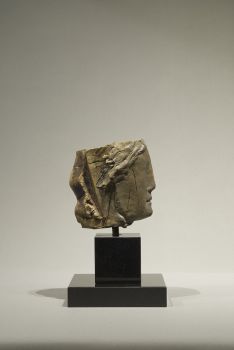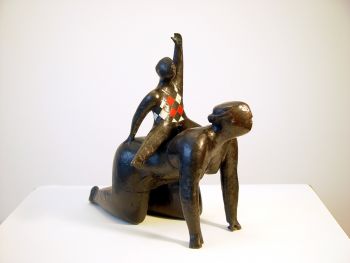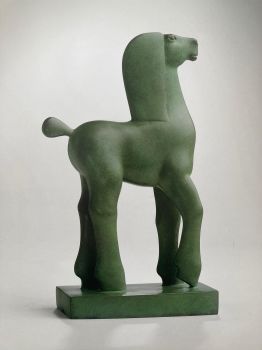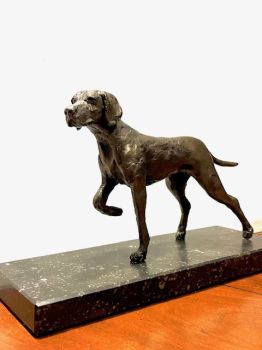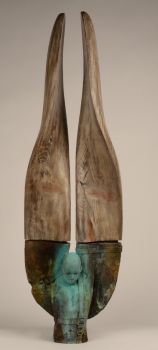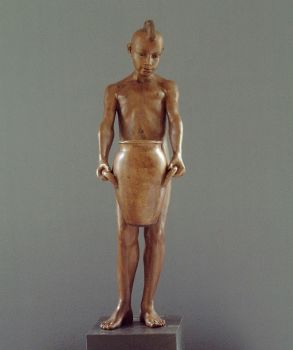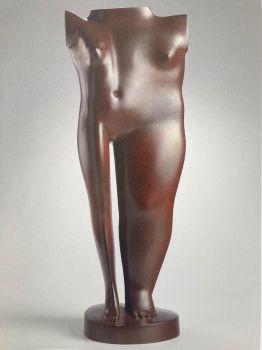Mounted Turk on Lion Hunt, after Francesco Fanelli 1659 - 1661
Artista Desconocido
BronceMetal
24 ⨯ 21 ⨯ 11 cm
Actualmente no disponible a través de Gallerease
- Sobre la obra de arteFrancesco Fanelli from Florence was one of the most important sculptors of the first part of the 17th century. He worked in Genoa after he moved there with his entire family in 1605. It was there where he trained his children in sculpting. In 1630 he moved to Britain, possibly inspired by the Flemish painter sir Anthony van Dijck, who stayed in Genoa in 1621-1622 and 1625-1626 and who also moved to Britain around 1632.
Fanelli soon was appointed as royal sculptor. The inventory of the Royal Household in 1640 mentions several statues made by Francesco Fanelli, who was also known as the one-eyed Italian. Most of these statues still remain in the collection.
Other members of the English nobility commissioned these small bronzes from which Fanelli derived his reputarion. This way his fame spread throughout Europe. The biographer Joachim von Sandrart speaks highly of the bronzes of Fanelli in his Teutsche Academie of 1675, especially about the fact that the high quality castings didn’t need to be touched up. This statue exelently illustrates the talents of Fanelli. The hunt for a lion is cought at its most dramatic moment. All movement is converged to the devastating bite of the predator. - Sobre el artista
Puede suceder que un artista o creador sea desconocido.
Algunas obras no deben determinarse por quién está hecho o por (un grupo de) artesanos. Algunos ejemplos son estatuas de la Antigüedad, muebles, espejos o firmas que no son claras o legibles, pero también algunas obras no están firmadas en absoluto.
También puedes encontrar la siguiente descripción:
•"Atribuido a …." En su opinión, probablemente una obra del artista, al menos en parte.
•“Estudio de….” o “Taller de” En su opinión, una obra ejecutada en el estudio o taller del artista, posiblemente bajo su supervisión
•“Círculo de…” En su opinión, una obra del período del artista que muestra su influencia, estrechamente asociado con el artista pero no necesariamente su alumno.
•"Estilo de …." o “Seguidor de…”. En su opinión, una obra ejecutada al estilo del artista pero no necesariamente por un alumno; puede ser contemporáneo o casi contemporáneo
•"Manera de …." En su opinión una obra al estilo del artista pero de fecha posterior
•"Después …." En su opinión, una copia (de cualquier fecha) de una obra del artista
•“Firmado…”, “Fechado…” o “Inscrito” En su opinión, la obra ha sido firmada/fechada/inscrita por el artista. La adición de un signo de interrogación indica un elemento de duda.
•“Con firma…”, “Con fecha…”, “Con inscripción…” o “Lleva firma/fecha/inscripción” en su opinión la firma/fecha/inscripción ha sido añadida por alguien que no es el artista
Artwork details
Related artworks
Artista Desconocido
Una canasta de dulces de plata holandesa1738
Precio a consultarJacob J. Roosjen SRI
1 - 4 / 12 curada por
curada porDanny Bree
Eduard Charlemont
‘Allegories of Africa and America’1872
Precio a consultarZebregs & Röell - Fine Art - Antiques
Artista Desconocido
A Surinam-themed Amsterdam long-case clock1746 - 1756
Precio a consultarZebregs & Röell - Fine Art - Antiques
 curada por
curada porGallerease Magazine
1 - 4 / 24- 1 - 4 / 24
- 1 - 4 / 24
- 1 - 4 / 24

